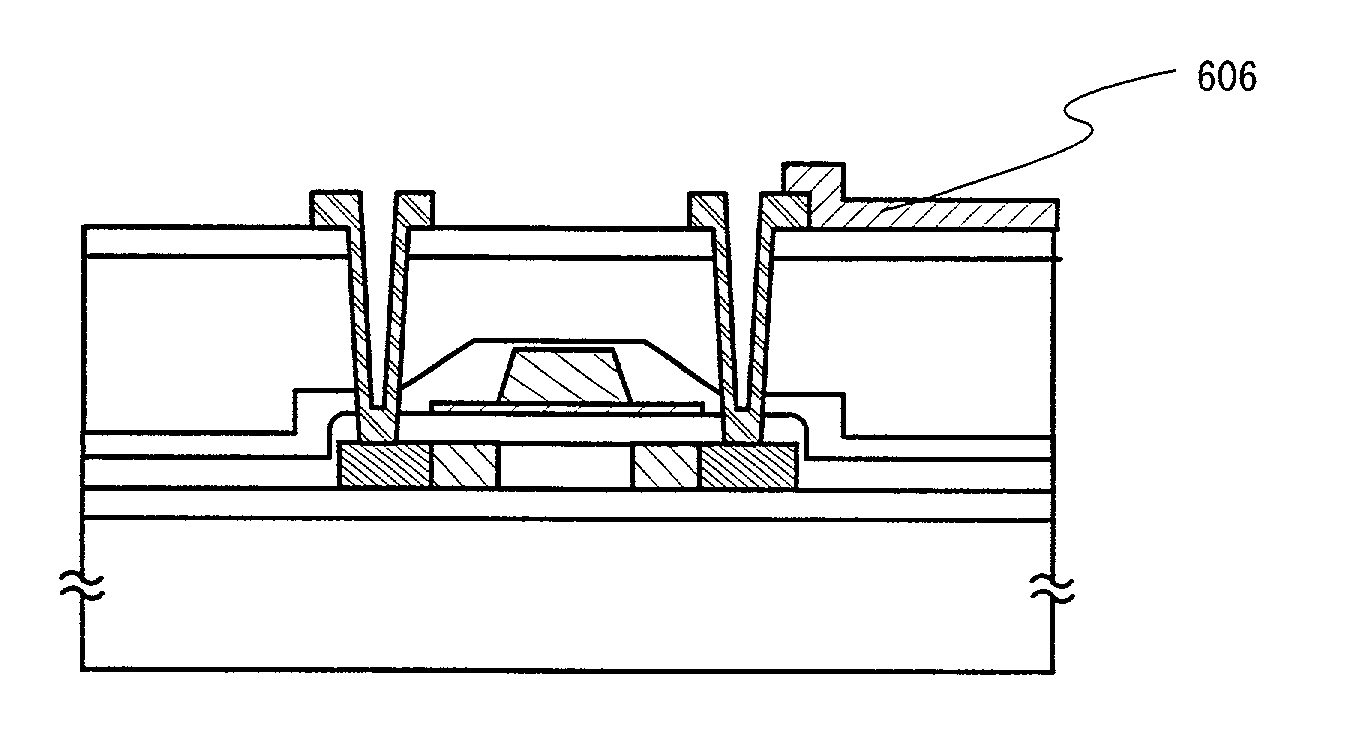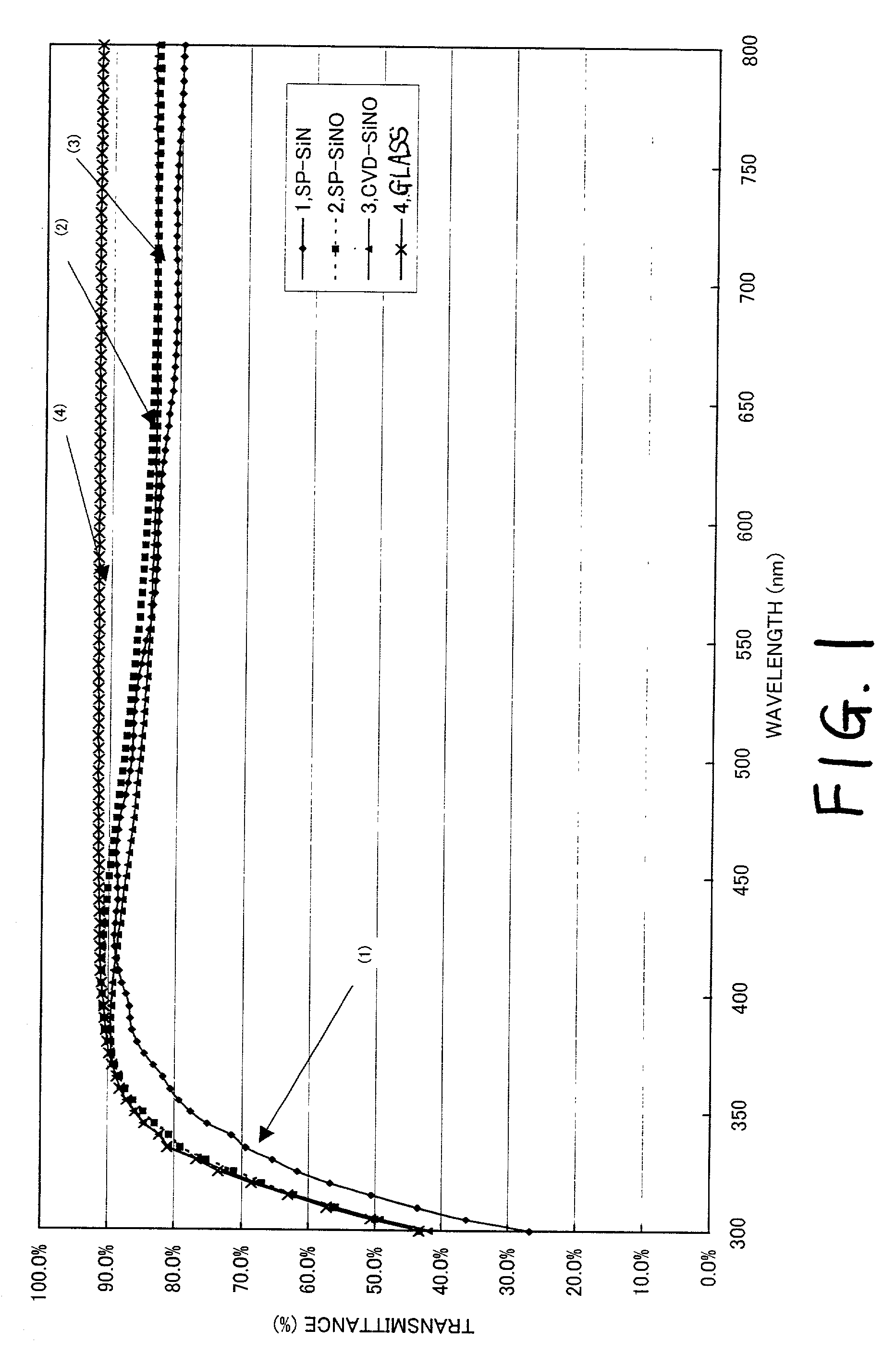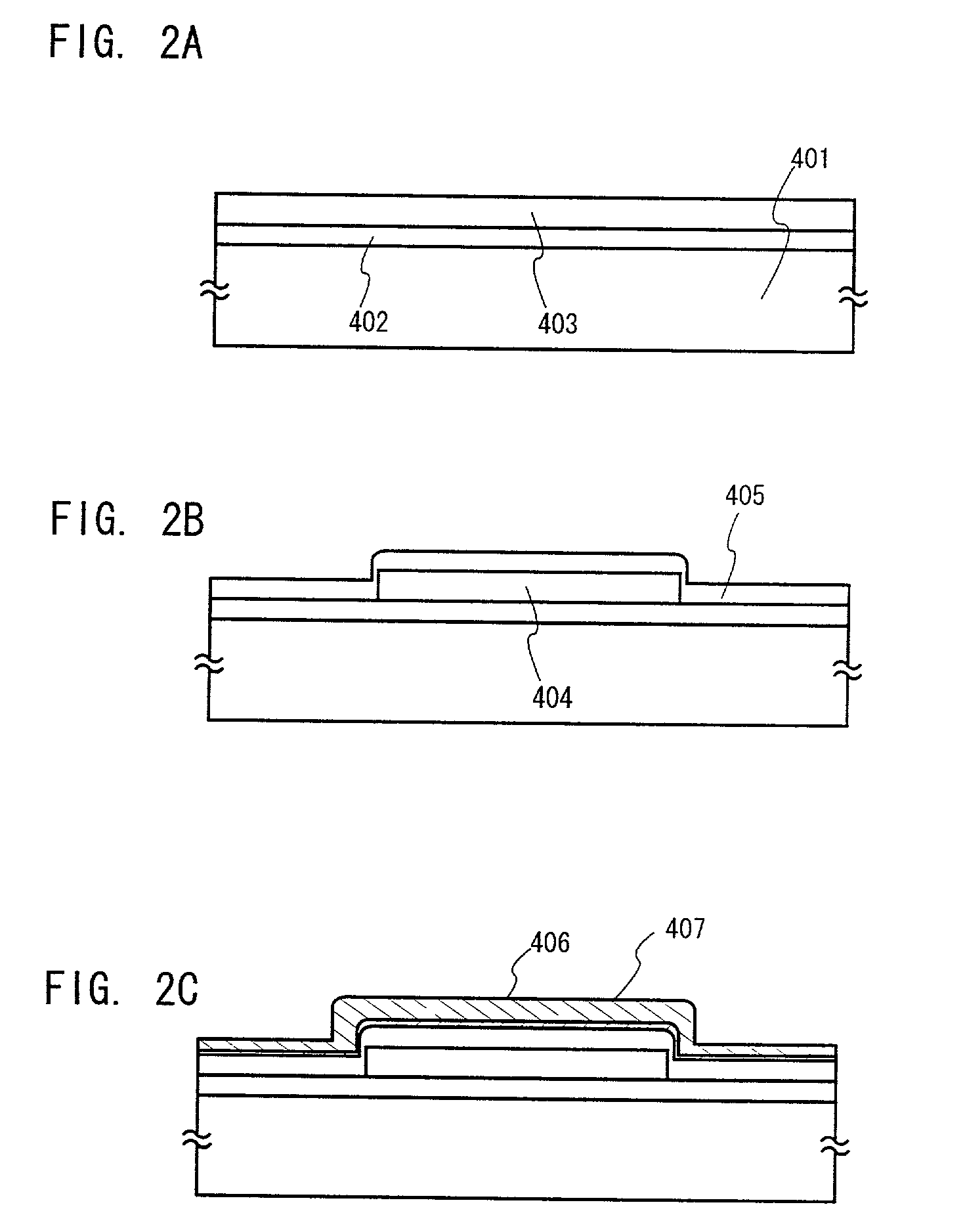Light emitting device and method of fabricating the same
- Summary
- Abstract
- Description
- Claims
- Application Information
AI Technical Summary
Benefits of technology
Problems solved by technology
Method used
Image
Examples
embodiment 1
[0068] [Embodiment 1]
[0069] A detailed explanation will be given by way of the following embodiment. Here, an example, in which a TFT substrate used for a light emitting device is formed.
[0070] In FIG. 2A, a glass substrate or quartz substrate is used for a substrate 401. In the case of using a glass substrate, a substrate film 402 comprising an insulating film is formed on a substrate surface to prevent dispersion of impurities from the substrate.
[0071] Subsequently, a semiconductor layer 403 having a thickness of 25 to 80 nm (preferably, 30 to 60 nm) and an amorphous structure is formed by means of known methods such as the plasma CVD technique and the sputtering method, and a process of crystallization is implemented to fabricate a crystalline semiconductor layer from an amorphous semiconductor layer.
[0072] The laser annealing method and the thermal annealing method (method of crystal growth from solid phase) or the rapid thermal annealing method (RTA method) can be applied as a ...
embodiment 2
[0100] [Embodiment 2]
[0101] An explanation will be given below to a process of fabricating a TFT on a plastic substrate in this embodiment with reference to FIGS. 10A to 10E.
[0102] First, a plastic substrate 201 comprising an organic material is prepared. In this embodiment, the substrate 201 comprising polyimide is used. The substrate comprising polyimide is heat-resistible at about 399.degree. C. and is not transparent but brown-colored. Then a substrate insulating film 202 is formed on the substrate 201. The substrate insulating film is not specifically limitative in a deposition method provided that the method is implemented in a temperature range, in which the plastic substrate is not deformed, preferably a temperature range not exceeding 300.degree. C., and here the sputtering method is used. With the sputtering method, deposition is effected in an atmosphere, in which a sputtering gas does not contain hydrogen, and thus a quantity of hydrogen in the film is 5 atomic % or less...
embodiment 3
[0113] [Embodiment 3]
[0114] An example of fabricating an EL (electro-luminescence) display device using the semiconductor device of Embodiment 1 will be explained in this embodiment. Note that FIG. 6A is a top view of an EL display device using the present invention, and FIG. 6B is a cross sectional view thereof.
[0115] In FIG. 6A, reference numeral 4001 denotes a substrate, 4002 denotes a pixel portion, 4003 denotes a source side driving circuit, 4004 denotes a gate side driving circuit. The driving circuits are connected to external equipment, through an FPC (flexible printed circuit) 4006 via a wiring 4005.
[0116] At this time, a first sealing material 4101, a covering material 4102, a filler material 4103 and a second sealing material 4104 are provided so as to enclose the pixel portion 4002, the source side driving circuit 4003, and the gate side driving circuit 4004.
[0117] A cross sectional diagram of FIG. 6 cut along the line A-A' is shown in FIG. 6B. On the substrate 4001, a d...
PUM
 Login to view more
Login to view more Abstract
Description
Claims
Application Information
 Login to view more
Login to view more - R&D Engineer
- R&D Manager
- IP Professional
- Industry Leading Data Capabilities
- Powerful AI technology
- Patent DNA Extraction
Browse by: Latest US Patents, China's latest patents, Technical Efficacy Thesaurus, Application Domain, Technology Topic.
© 2024 PatSnap. All rights reserved.Legal|Privacy policy|Modern Slavery Act Transparency Statement|Sitemap



